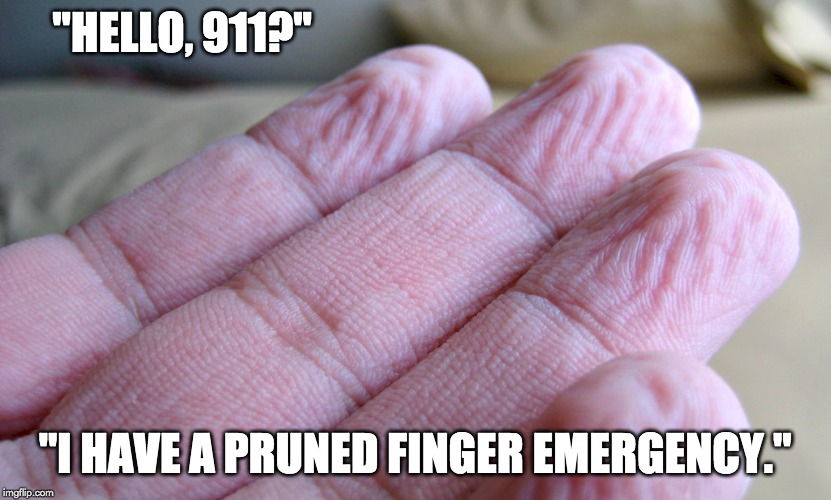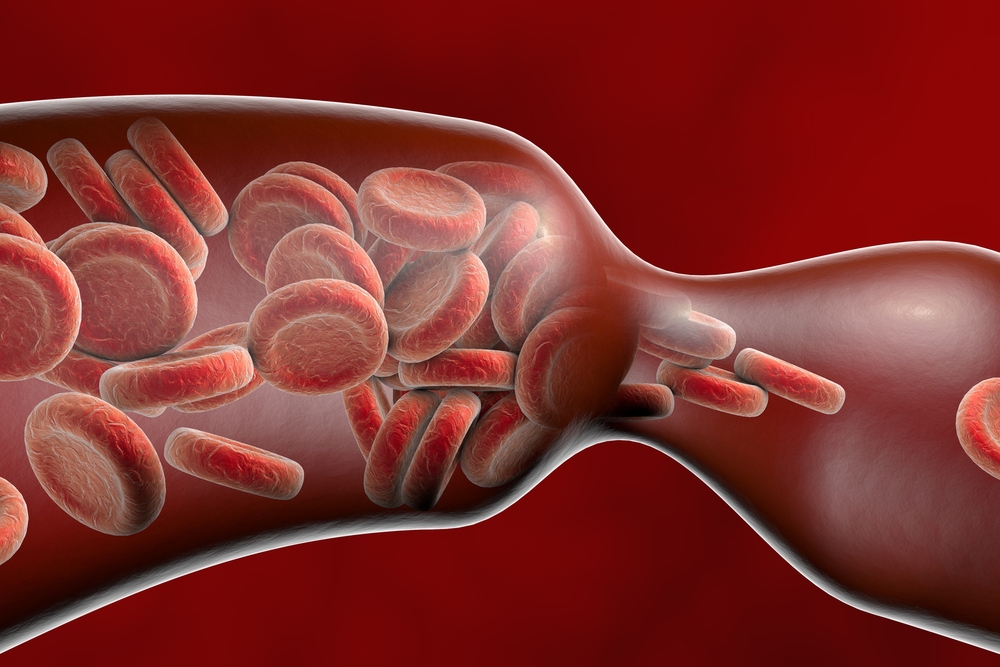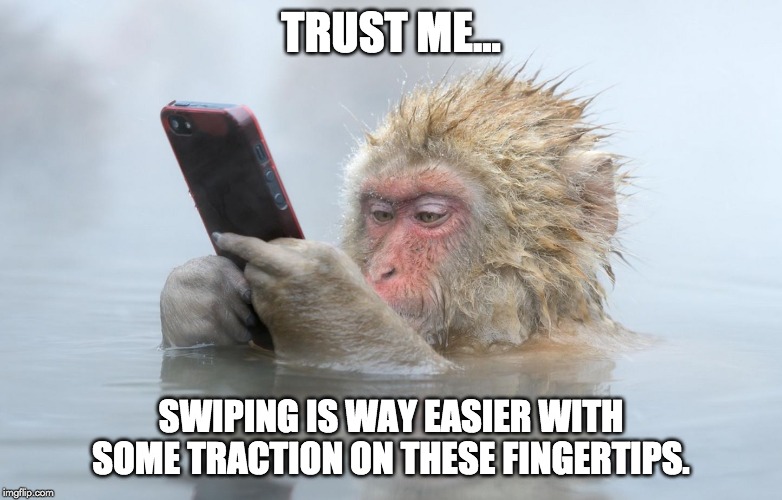Table of Contents (click to expand)
It is believed that our fingertips, toes and palms get wrinkled or pruny when submerged in water because of a reaction in our nervous system that helps us sustain a strong grip on things, despite a fluid being present.
Think back to the last time you took a bath or an extended dip in the ocean… when you entered the water, your body felt and looked normal, yet after 5-10 minutes, you began to notice changes occurring. More specifically, your fingers appeared to be rapidly aging, as wrinkles soon developed on your fingertips and toes! Although the wrinkling of our digits in water is almost universally seen, temporary and harmless, it’s still another weird quirk of our body that people have been debating in some form for years. So… why do our fingers prune after getting wet?
Form And Function
Human beings have been swimming for thousands of years, which means that our fingers have likely been pruning for just as long! As is the case with anything unusual or unexplained, people have long wondered why pruning happens in such specific places on the body following their exposure to water. It is interesting to note that this wrinkling and pruning doesn’t happen on all areas of our skin, just the fingers, toes and palms.

As the theory of evolution and mountains of natural selection evidence has continually reinforced, our physical forms evolve based on what adaptations serve to improve our fitness—our ability to reproduce and pass on our genetic material to a new generation. Those adaptations are typically the result of a mutation in our DNA that causes a phenotypic difference. If this new phenotypic trait (i.e., wrinkled fingertips in water) is able to help improve fitness and survival, it can then be passed on to future generations. If the mutation leads to a decrease in fitness, that individual will be less likely to survive and pass on its genes, meaning that the trait will likely not spread.
For many years, it was believed that our fingers pruned as a result of osmosis. Basically, the outer layers of cells on the hands and fingers would swell because they were taking in water from their surroundings. This swelling effect can also take place in the dead skin cells on the outer layer of your epidermis. While there might be some water absorption happening in the skin, this explanation has been dismissed because it doesn’t factor in why our entire body doesn’t prune or wrinkle when we go for a swim. Additionally, it was found that the fingers and toes will not prune if there is nerve damage to those areas, which suggested that the wrinkly trait was directly linked to the autonomic nervous system, which does things automatically for our body (i.e., breathing, heart rate, digestion, sexual arousal, etc.).
Vasoconstriction
It is now known that the wrinkling of our skin is because of vasoconstriction, a process by which the blood vessels beneath the skin shrink down and tighten. When those blood vessels contract, the skin above them will collapse down into the form of wrinkles that we see after spending a few minutes in the bath! Rather than the wrinkles taking up more space on our hands (swelling up), they are actually a sign that vessels in our hands and fingertips have compressed!

Also Read: Do Animals Have Fingerprints?
A Unique Trait
Knowing what causes a physical change in the body is one thing, but knowing why that change occurs is often the more interesting part of the story. In the case of this unusual and localized adaptation, experts now believe that it has to do with traction! Similar to the purpose of treads on the tire of your car, the wrinkles on our hands and fingers help to redirect water away from our gripping surfaces. By creating these channels in specific parts of the body, we can help to move water effectively away from functional areas.
To put this in clearer perspective, imagine that a primitive human was bent over a river, trying to catch a fish with his bare hands. He got very close a number of times, but even when his fingers would wrap around his potential dinner, it would simply slip away; there was no traction between his fingers and the scales of the fish. The water formed a barrier between the two other surfaces. However, after five or six minutes, the skin on his fingertips began to wrinkle and prune, which helped redirect the water away from those points. Now, when he grabbed at a fish, the wrinkles gave him more surface area and a more effective grip, allowing him to catch a meal and survive. Trying to pick up wet objects with a wet, wrinkled hand is therefore much easier than trying to grab wet objects with a flat, unwrinkled surface.

The functionality and cause of this adaptation also explains why we only find these pruny sections on our fingers, palms and feet. Before our evolutionary journey turned us into bipedal humans, we were great apes, who used both their hands and feet for gripping and other dextrous tasks. This explains why we have found similar wrinkling patterns in the extremities of macaque monkeys and chimpanzees. Nature has been developing this enhanced grip strategy for millions of years in species that were then able to sharpen their fine motor skills. That being said, it is still quite a unique adaptation, and is seen only in other primates closely related to humans.
Also Read: Why Do Humans Have Fingernails And Toenails?
A Final Word
If you fall asleep in the tub and come out looking like a prune, don’t worry, as the phenomenon is temporary. Once the nervous system calms down and allows the blood vessels to return to normal, your skin will flatten back out. Just remember that your body has a purpose for everything (even the vestigial parts were once important!), even the seemingly bizarre or pointless quirks like pruney fingers and toes!
How well do you understand the article above!

